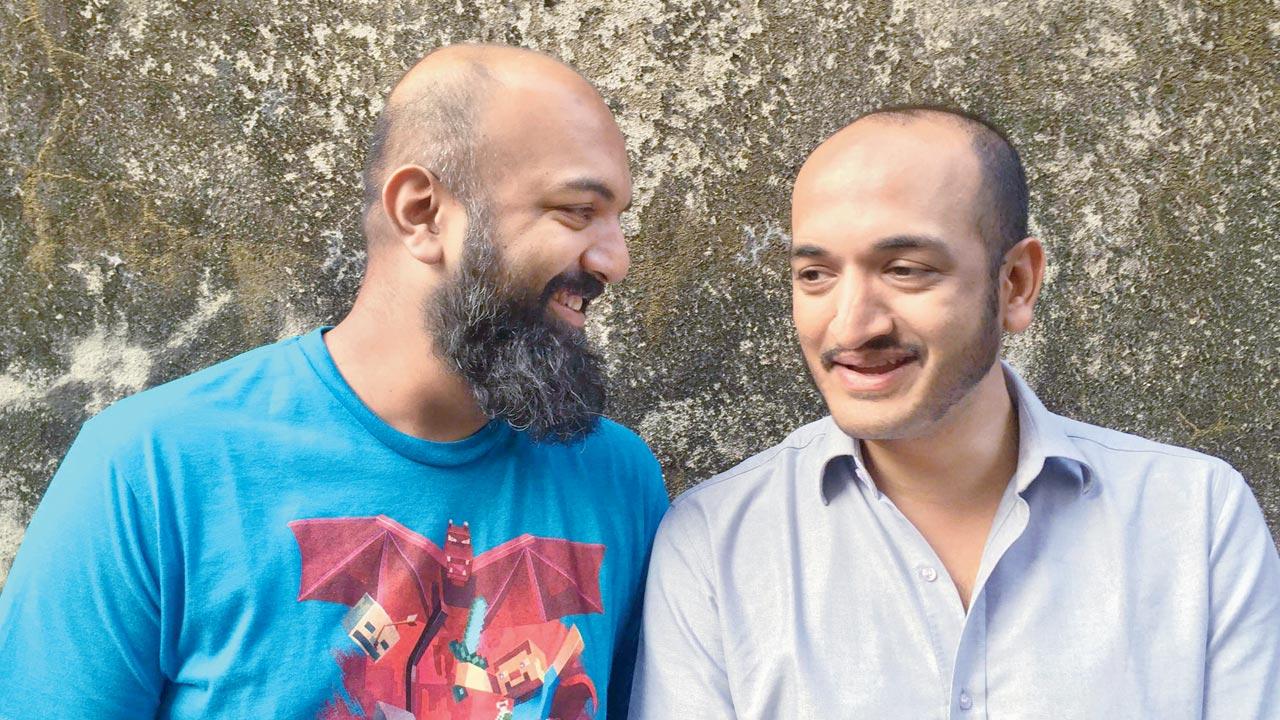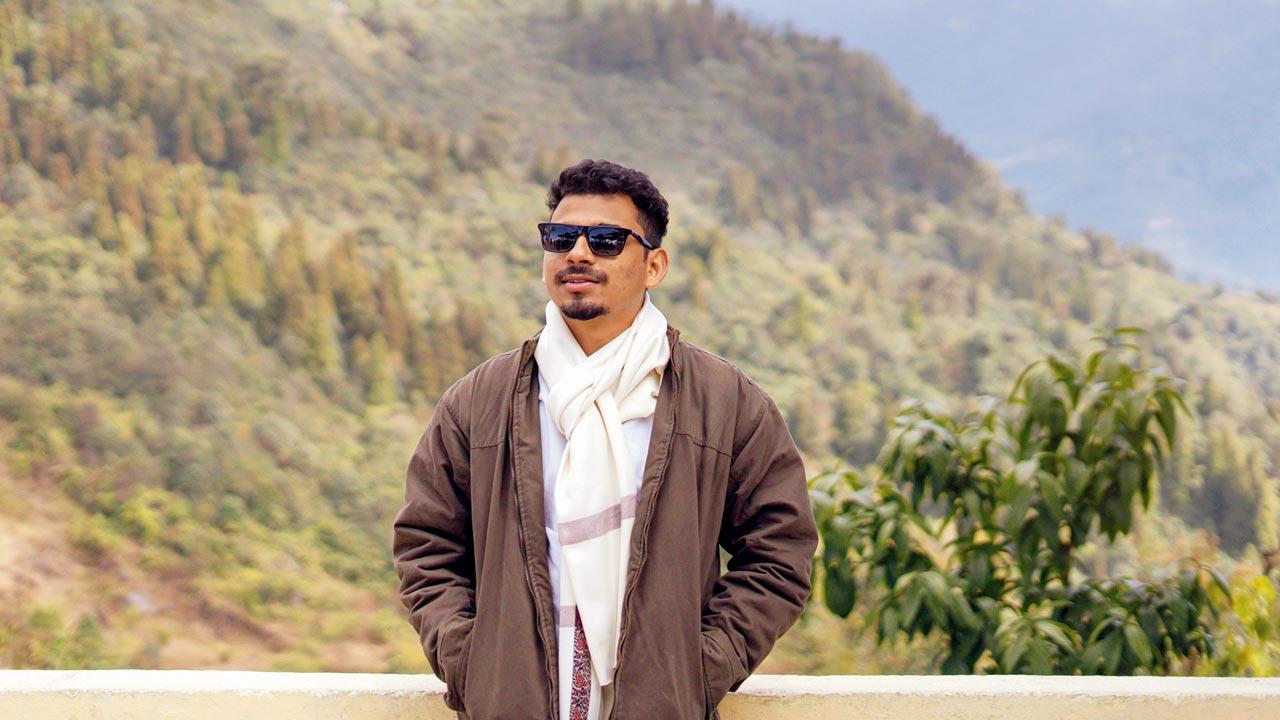The proliferation of AI tools has democratised the field of speculative fiction with many, including architects and graphic designers believing that it’s mirroring our future

The INS Taj as imagined after a massive floodplain around the Yamuna. Images Courtesy/Ayaz Basrai
It's April 2036. Heavy glacier melts in the Himalayas have created a massive floodplain around the Yamuna, displacing over 12 million people. The river has flooded almost all of the low lying areas around, causing civil unrest, breakout of looting and plunder, widespread disease, leading to mass disbursement of rations. The chaos has resulted in large fortifications around all the higher areas, including one of the seven wonders of the world, the heritage monument Taj Mahal. Soon, fortifications enter the monument itself, and the defence force teams begin to construct armoured scaffoldings over its white marble contours. The massive deployment of armed forces and the now, almost floating monument resulted in it being commissioned as India’s second indigenous warship—the INS Taj is assembled in under two years, at a complete cost of just Rs 8,500 crore.”
ADVERTISEMENT
This story reads like a page out of a dystopian novel. But on Ayaz Basrai’s Instagram page @thebusride, this hellish tale of how a paradise is lost to a calamity, comes alive in illustrated, speculative renderings.
 Ayaz and Zameer Basrai
Ayaz and Zameer Basrai
Basrai, who is the co-founder of architecture and interior design firm, the Busride Design Studio, and heads the Busride Lab, has for the last few months been experimenting with AI tools to reimagine the many alternative futures of Agra’s iconic monument of love. The possibilities seem endless—adaptive reuse of the Taj Mahal as a library and archival centre; a nuke reactor mirroring the landmark after the discovery of a massive uranium deposit across the banks of the Yamuna; and even Takashi Murakami’s colourful revival of Mehtab Bagh near the Taj as part of the Indo-Japanese Art Year 2045.
Basrai’s interest in speculative fiction and design goes back nearly 20 years, when he was working on a research project at the National Institute of Design. “That project involved creating a bridge between the emerging virtual world and the world that we experience on a day-to-day basis. In 2003, the technology that existed was ICQ chat and Yahoo Messenger. So, I was studying those kinds of constructs. Obviously, after that it exploded. But one still had a sense that there was a paradigm shift in culture,” he recalls. When he and brother Zameer started Busride, they realised quickly the need for a sustained research practice “that could potentially give us meaningful directions to pursue in our design practice”. With the India Futures Project, launched nearly seven years ago, Basrai once again used speculative fiction to predict a roadmap for the country leading to 2035. “Speculative fiction opens up the funnel... it’s not a reductive process. It’s a fairly promiscuous and pluralistic process, where you create multiple futures, and a powerful construct of nostalgia for the future. In doing so, you are able to populate a vision that people could potentially fall in love with or hate. For a design studio, it helps build meaningful steps to create from or move away from those speculation threads,” he says over a telephonic chat from Goa where he is based.
 Saicharan Shetty
Saicharan Shetty
But the recent profusion of AI tools like Stable Diffusion and Midjourney that create images from textual descriptions, Basrai says has changed the game. “Exploring your personal visions has now become more democratic,” he says, adding, “It’s one more tool in our arsenal to quickly prototype potential futures.” Part of the reason why Basrai and team chose to work on the Taj, is because it’s one of the very few Indian monuments that exist on AI databases. “You don’t have anything from Fatehpur Sikri or even the temples of Madurai, because these are all outside the imaginations of machine intelligence. You have to remember that these are all trained on Western databases. A lot of what we need to do is populate these visions with our own,” says Basrai.
Navi Mumbai resident Saicharan Shetty, who is co-founder and creative director of a new-age creative ad agency, Spinning Top Media, experienced a similar limitation when working on Midjourney to reimagine Indian cities of the future. The idea for his renditions came from Cyberpunk 2077, a video game set in the dystopian Night City. “I wanted to create a desi Cyberpunk universe, visualising how certain landmarks like the Bandra Worli Sea Link or the Marine Drive promenade would look like if they got into the Cyberpunk mode,” he says. His exploration with the more urban cities like Mumbai and Bengaluru fuelled an interest to create a Cyberpunk vision for the ancient and cultural Varanasi. These futuristic images, as fascinating as they seem, are dull and dark, with shades of neon adding some relief. Thick billowing clouds of smoke form the backdrop to Wankhede stadium, whose stands are ripped apart from the centre, exposing the stadium and the cricket field—the stadium itself is surrounded by slums and towering skyscrapers. “One of the drawbacks of Midjourney before the new engine came about, was that it was too abstract, so normal day to day things you see in Mumbai or India, like the taxis or autorickshaws, could not be visualised by the AI tool. I used Photoshop and Lightroom to enhance these images.”
 The INS Taj as imagined after a massive floodplain around the Yamuna. Images Courtesy/Ayaz Basrai
The INS Taj as imagined after a massive floodplain around the Yamuna. Images Courtesy/Ayaz Basrai
Shetty says that while his work stemmed out of pure curiosity, it has also helped him project into our reality. “AI tools are showing us the mirror to our futures. As the population explodes, people will find themselves fighting for basic necessities, including space. Add pollution to the mix, and are cities won’t look the same. In fact, Mumbai during the peak hours already looks like a Cyberpunk city.”
Basrai says that one can look at these renderings as dystopic or as an opportunity to really rediscover what it means to be human. “This [speculative fiction] becomes mental fodder for future generations,” he says. He believes that this tech should actually be in the domain of public policy. “We are still feeling our way around this tech, but there are interesting offshoots,” he says. Recently, the Busride Lab worked with a group in Goa looking into conservation of mangroves. “At present, we are prioritising grey infra over green infra in a big way. I don’t think we, as a culture, have got the tools to visualise what green infra looks like, but through speculative fiction, we were able to create these provocative images of what a healthy symbiosis between a city and mangroves look like. It is fairly powerful; the more people use these tools, the more conversation there is going to be around it.”
Prathima Manohar, urbanist and co-founder of PlaceXplore, agrees. “In my opinion, speculative design is an exciting tool to visualise the options and potential solutions to tackle the big social, economic and environmental challenges we are currently facing. These challenges call for a fundamental reimagining of the state, policy and our social contracts. Speculative design may serve as a catalyst for people to start thinking about radical concepts. It also helps create prototypes for a better future in addition to pushing the boundaries of our imagination.”
 Subscribe today by clicking the link and stay updated with the latest news!" Click here!
Subscribe today by clicking the link and stay updated with the latest news!" Click here!







